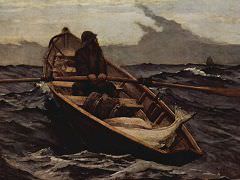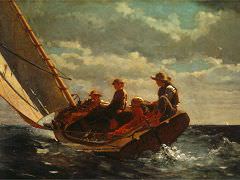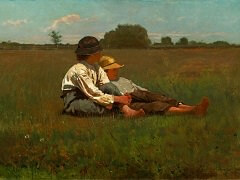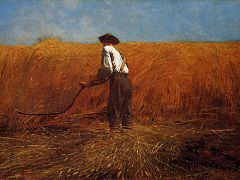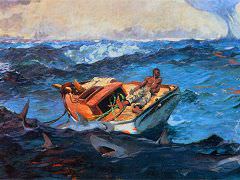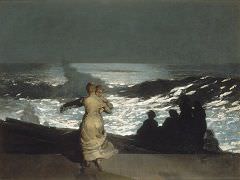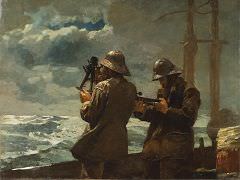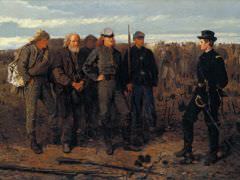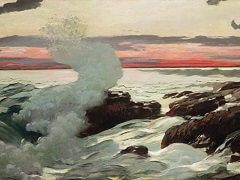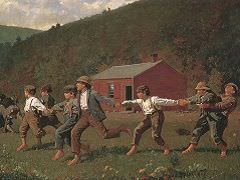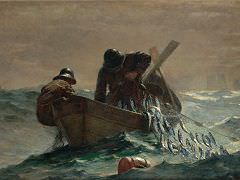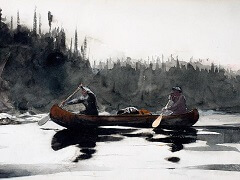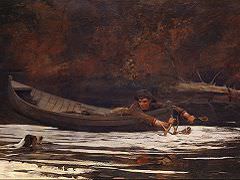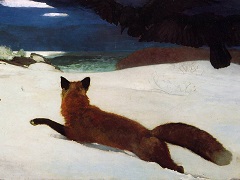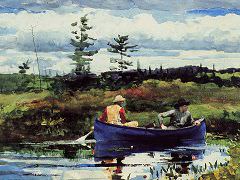After the Hurricane, Bahamas, 1899 by Winslow Homer
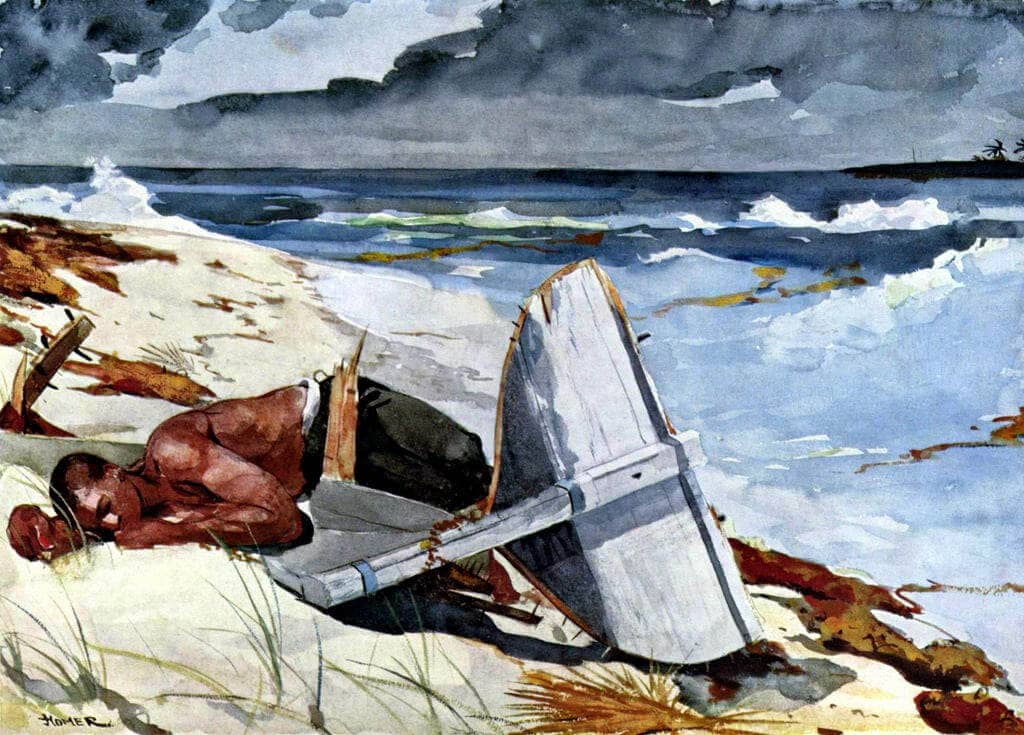
After the Hurricane, Bahamas shows a luckless man washed up on the beach, surrounded by fragments of his shattered boat. The splintered boat testifies to the frightening severity of the hurricane, even as billowing black clouds recede into the distance and sunlight begins to glimmer through the clouds. Frothy white caps and a surprising horizontal stroke of brilliant green in the distance conjure an ocean that is gradually calming itself. Homer used thin washes and fluid brushstrokes to render the waves, setting up a contrast to dry land, where he employed opaque red and yellow pigments, thickly applied, for the seaweed tossed upon the sand by the storm.
Revered as America's master of watercolor, Winslow Homer did not begin working in the medium until the mature age of thirty-seven. As a watercolorist, Homer adapted his practice to the diverse locales he visited. His sojourns in the tropics took him to the Bahamas, Bermuda, Cuba, and various locations in Florida. In each new environment, the self-taught artist pushed the flexible medium in new directions as he applied his increasingly sophisticated understanding of color and light to a new set of atmospheric conditions. This compelling watercolor was painted during Homer's second trip to the Bahamas in the winter of 1898 - 99. Depicting a luckless man washed up on the beach, surrounded by fragments of his shattered craft, the work demonstrates the artist's fascination with the rapid and dangerous weather changes of the tropics. Here sunlight glints through gradually thinning storm clouds. Homer employed thickly applied opaque red and yellow pigments for the seaweed tossed on the sand, creating a contrast with the thin washes and fluid brushstrokes that he used to render the receding waves.

